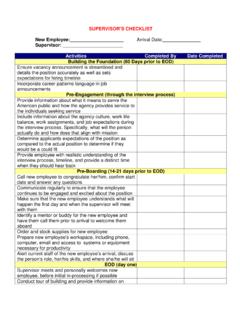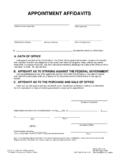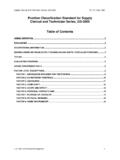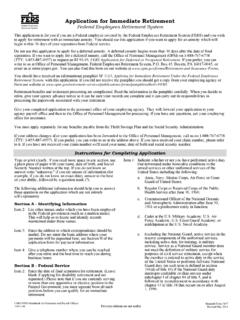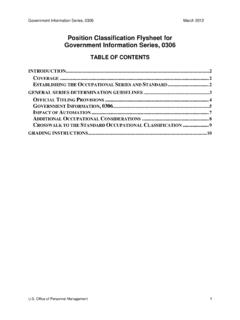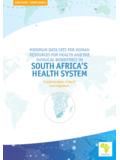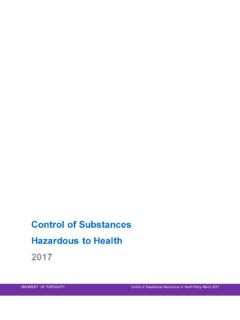Transcription of Guidance for Agency-Specific Diversity and …
1 November 2011 Guidance for agency -SpecificDiversity and InclusionStrategic Plans 2 Table of Contents Section 1 Operational Section 2 Goal 1: Workforce Diversity ; Priorities, Actions, and Sample Goal 2: Workplace inclusion ; Priorities, Actions, and Sample Goal 3: Sustainability; Priorities, Actions, and Sample Conclusion: The Path Forward; Diversity , inclusion , and the Innovation Appendix A: CHCO, EEO, CDO Roles and Responsibility 3 Introduction This Guidance on implementation of the Government-Wide Diversity and inclusion Strategic Plan (the Guidance ) provides agencies with direction to enable them to fulfill the goals identified in Executive Order 13583 and coordinate their Diversity and inclusion efforts within the agency in a collaborative and integrated manner.
2 Currently, in many agencies, human resource (HR) programs collect workforce data, advise management in making personnel decisions, and submit reports to the Office of Personnel Management (OPM). Equal employment opportunity (EEO) programs manage the discrimination complaint process, track data, identify potential barriers, and submit reports to the Equal Employment Opportunity Commission (EEOC). To deliver excellent service to the public through a skilled, engaged, and diverse workforce, HR, EEO, and Diversity and inclusion (D&I) must work collaboratively and share data and information. Further, agencies that draw on the unique knowledge and expertise possessed by all three programs are better able to achieve the goal of becoming a model workplace. This Guidance provides a path forward, drawing from leading practices identified by Federal, state, and private sector models of collaboration.
3 The Guidance is separated into two sections. Section 1 provides operational Guidance and sets forth the roles, responsibilities, and requirements applicable to Federal agencies that will facilitate their successful execution of actions outlined in Executive Order 13583. Section 2 provides specific Guidance to Federal agencies that will enable them to bring themselves into alignment with the priorities and actions outlined in the Government-Wide Diversity and inclusion Strategic Plan (the Plan). In this section, each goal is listed along with its associated priorities and action items. Section 2 also provides Guidance on possible measurements for the actions. The Office of Personnel Management, in coordination with the Office of Management and Budget (OMB) and the Equal Employment Opportunity Commission (EEOC), will continue to refine these measurements and provide additional Guidance for agencies in subsequent issuances.
4 Finally, in the conclusion of this Guidance , Federal departments and agencies are provided a pathway to connecting Diversity and inclusion with innovation. Below are the definitions, vision and mission statements, and goals from the Government-Wide Diversity and inclusion Strategic Plan (the Plan). Definitions of Diversity and inclusion Throughout this document, we define workforce Diversity as a collection of individual attributes that together help agencies pursue organizational objectives efficiently and effectively. These include, but are not limited to, characteristics such as national origin, language, race, color, disability, ethnicity, gender, age, religion, sexual orientation, gender identity, socioeconomic status, veteran status, and family structures.
5 The concept also encompasses differences among 4 people concerning where they are from and where they have lived and their differences of thought and life We define inclusion as a culture that connects each employee to the organization; encourages collaboration, flexibility, and fairness; and leverages Diversity throughout the organization so that all individuals are able to participate and contribute to their full potential. Federal Government-Wide Diversity and inclusion Vision Statement Be the Nation s model employer by leveraging Diversity and fostering inclusion to deliver the best public service. Federal Government-Wide Diversity and inclusion Mission Statement Recruit, retain, and develop a diverse, high-performing Federal workforce that draws from all segments of society and values fairness, Diversity and inclusion .
6 Goals: 1. Workforce Diversity . Recruit from a diverse, qualified group of potential applicants to secure a high-performing workforce drawn from all segments of American society. 2. Workplace inclusion . Cultivate a culture that encourages collaboration, flexibility, and fairness to enable individuals to contribute to their full potential and further retention. 3. Sustainability. Develop structures and strategies to equip leaders with the ability to manage Diversity , be accountable, measure results, refine approaches on the basis of such data, and institutionalize a culture of inclusion . The three goals listed above are absolutely necessary for the successful growth of Diversity and inclusion . Other characteristics of Diversity and inclusion best practice plans, such as leadership, accountability, measurement, and training are components of, and integrated in, the three goals.
7 1 Data on all the characteristics listed in this definition of Diversity is not collected. However, OPM, in coordination with OMB, EEOC, and DOJ, will continue to refine existing measurements and provide additional Guidance for agencies in subsequent issuances. 5 Section 1 Operational Guidance This operational Guidance sets forth the roles, responsibilities, and requirements applicable to Federal agencies in successfully executing actions outlined in Executive Order 13583. Successful implementation of the Government-Wide Diversity and inclusion Strategic Plan (the Plan) will help each agency achieve its Diversity and inclusion objectives for the American people. Notably, the priorities outlined in the Plan will succeed only with the strong support of leaders, managers, and supervisors, as well as a coordinated and collaborative approach within HR, EEO and D&I functions.
8 Further, because of the complexity of the relevant legal landscape, agencies should consult with their General Counsels when crafting and implementing their individual strategic plans, to ensure compliance with law. agency Guidance : A) Pursuant to Executive Order 13583, section 3(a), each agency will designate the Chief Human Capital Officer (CHCO) as the responsible official for enhancing employment and promotion (employee life cycle processes) goals of the Government-Wide Diversity and inclusion Strategic Plan, in collaboration with the agency s Director of Equal Employment Opportunity and Director of Diversity (also known as the Chief Diversity Officer (CDO)), if any, including the development and implementation of the Agency-Specific Diversity and inclusion Strategic Plan.
9 1. The agency will ensure that the EEO Director reports to the Head of the agency , or his or her designee, and is not a direct report to the CHCO. 2. The role of CDO may be a separate or distinct role, or it may be held by the EEO Director or the CHCO. 2 2 Executive Order 13583 does not require agencies to designate a separate Director of Diversity or a Chief Diversity Officer. Our research has shown, however, that having three separate functions Human Resources (HR), EEO and Diversity and inclusion - has worked very well in the private sector and in those Federal agencies that have followed this tri-partite model. Where HR, EEO and Diversity and inclusion work together as teams rather than competitors, organizations experience the best outcomes, and this is the model we recommend.
10 6 3. The agency will assign Human Resources to lead workforce planning. 4. The agency will assign EEO to lead barrier 5. The agency s General Counsel or other chief legal officer shall ensure that agency specific plans are in compliance with laws, rules and regulations that make it unlawful for agencies to discriminate for or against an applicant or employee based on race, color, religion, sex (including pregnancy or gender identity), national origin, age, disability, sexual orientation or any other prohibited basis. B) The CHCO, EEO, and CDO (if any) roles and responsibilities are dependent upon the unique needs, reporting structures, current laws, policies, regulations, and strategies utilized by the respective agency . (See Appendix A for a roles and responsibility matrix that identifies functional responsibilities of the CHCO, EEO, and Diversity and inclusion functions).
